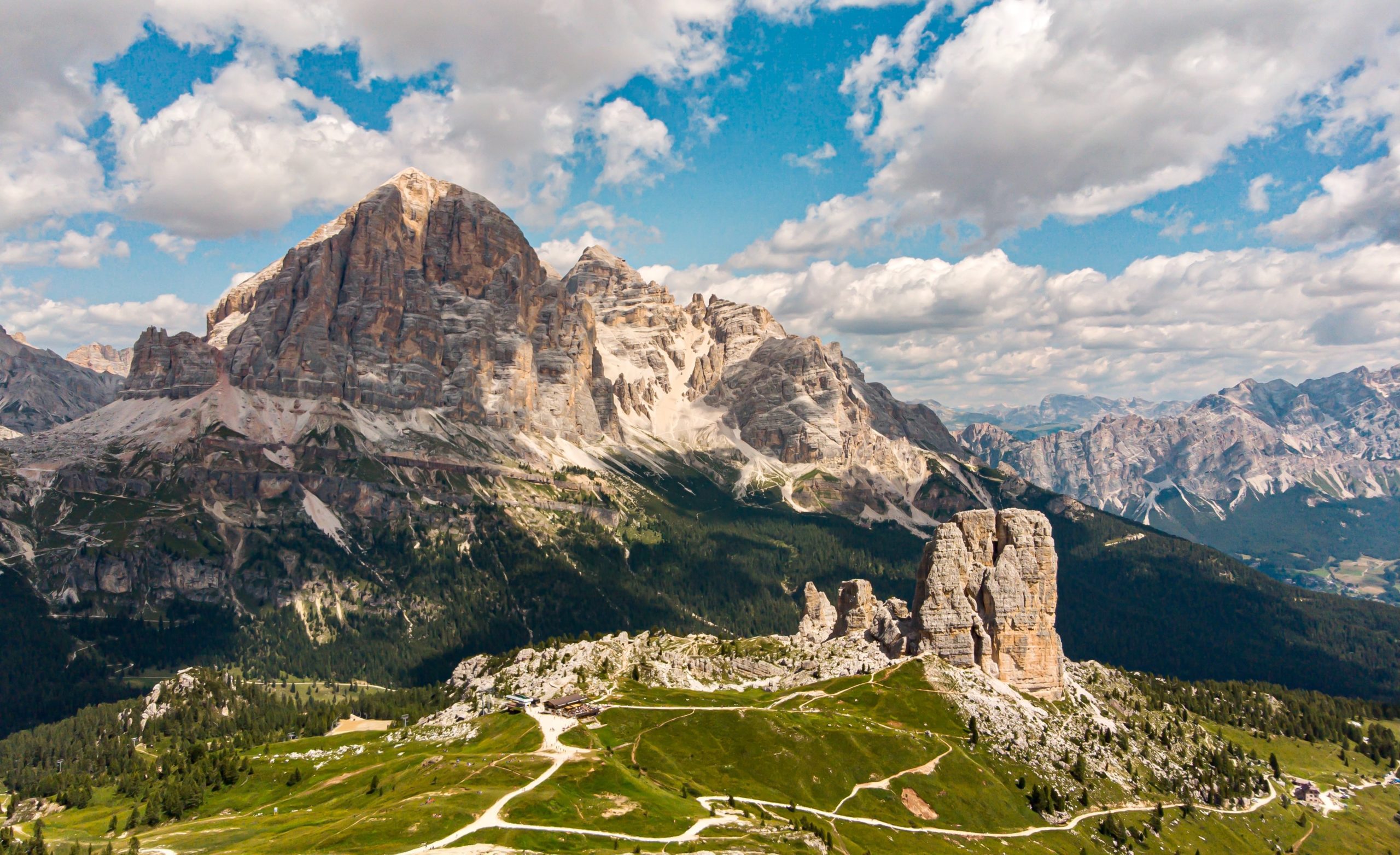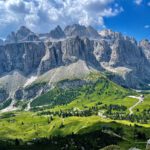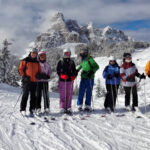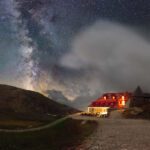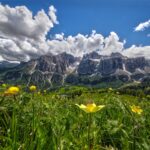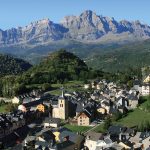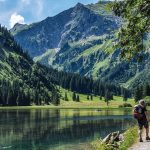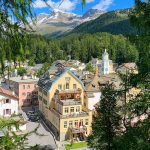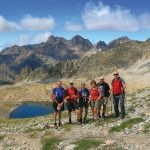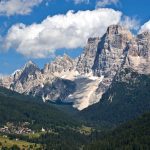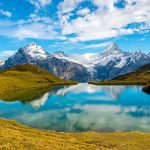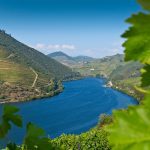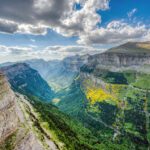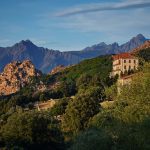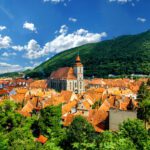As you would expect from a range of startlingly formed peaks, many of which exceed 3000m, the Italian Dolomites provide a rich abundance of tough challenges to walkers. Indeed, the presence of endless hard hikes in the Dolomites make these mountains a honeypot for hardcore adventurers, who respectfully flirt with the very precariousness of such environments.
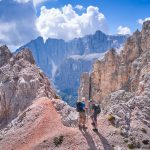
Naturally, the challenges come in forms, which every experienced hiker should be aware of before venturing out into the great outdoors: long ascents and descents; some precipitous paths and exposed sections; unexpected path deterioration and the need to scramble; distance and duration; remoteness and exposure, sometimes in rapidly deteriorating weather conditions, sometimes under a thirst-generating, ultra-violet sun. Sound preparation, a proficient level of fitness, contingency plans and alpine experience address each of these challenges.
But on a highly positive note, where difficult hikes in the Dolomites are concerned, this destination delivers a hundred-fold on the scenery offered. As the UK’s specialist tour operator for walking in the Dolomites for almost 30 years, we have witnessed many a spellbinding reaction to their unique and magical characteristics, particularly at elevated level. While gentle/moderate walkers wallow in the exquisite beauty of flower-strewn valleys loomed over by wow-factor peaks, the unleashed inspiration belongs – deservedly perhaps – to the intrepid, hard-working, early-starting, heart-healthy human machine, whose comfort zone is about the size of Texas. So, if that person is you, and you fancy a change from the UK’s glorious National Parks, put a walking holiday in the Dolomites on your bucket list. You will be blown away.
If challenging walks aren’t your cup of tea, then why not read our blog walking for beginners in the Dolomites ?

Hiking in the Dolomites
The Dolomites are the real treasures of the Alps, famed for their rock formations and rose-pink hues. Are they the most dramatic peaks in the world? We believe they might be. In the early 1990’s they made the film ‘Cliffhanger’ in the massifs just to the east of our base in Corvara, where many of our walks unfold. This is only relevant because ‘Cliffhanger’ was set in the Rockies, but the natural theatrics of the Dolomites lured the film location decision-makers. Subsequently, Stallone & Co. got an extended working holiday in Italy amidst the monumental cathedrals of pink rock with their jagged shapes and vertical flanks guarding over lush-green, picture-postcard valleys. Little wonder this is a UNESCO World Heritage destination, which hikers flock to.
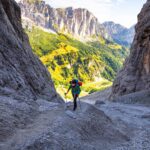
How hard is it to do the difficult hikes in the Dolomites?

With the appropriate level of fitness and experience, the answer to this question is … ‘Not at all.’ Collett’s Mountain Holidays has been delivering hiking holidays in the Dolomites for enough years to have developed a trusted place in the holiday market for walkers of all types, from the gentle flower-meadow stroller to those who crave the thrills and spills of a physically demanding high adventure. We know these mountains as well as anyone, and you can rest assured that the recommended high-level routes that await our active holidaymakers have been expertly selected after many years of research and perfection. That said, all our high-level walks are well waymarked, easy to navigate in clear weather conditions and representative of a rich variety of enthralling Dolomitic terrain.
We have been building walking holidays in the Dolomites around these hikes since 1997. On our centre-based walking holidays in the Dolomites, you choose day-to-day how big and high you would like your itinerary to be. With us, there is all the assistance you need: your own Walk Pack awaits you on your arrival with a range of breathtaking walks to suit your specified fitness level, plus a good walking map, comprehensive route notes and a daily early-evening opportunity to meet up with our Walks Team, who are available throughout your stay. Also, through our app, we provide smartphone navigation to keep you on the straight and narrow. If you opt for a break from the hiking, our Walks Team can propose local places of interest or other locally-supplied alpine activities, such as paragliding, mountain biking, sport climbing, via ferrata etc. Additionally you can try our hut-to-hut walking holidays, where you will walk point-to-point from one fantastic mountain rifugio to the next, high up in the Dolomites.
But whether you visit with Collett’s or come independently, most of the many charming mountain resorts that comprise the central Dolomites have multiple trails that climb between 500m and, say, 1200m to give fit walkers their fix of long and steady ascent, culminating in the rich rewards that punctuate the peaks, passes and high rocky reaches. And what might these rewards be? Well, firstly, mountain panoramas that will blow your socks off; secondly, close-ups of the craziest rock formations in the world; thirdly, remote mountain lodges (rifugios), where hearty food, refreshment, and camaraderie flourishes among trekkers; fourthly, regular moments of solitude, precious opportunities for reflection; and finally, surprisingly abundant flora and fauna: soaring golden eagles, athletic chamois, exquisite alpine rock plants and much more besides. In short, these are walks that get the ‘man/woman in the street’ further from the street than he/she ever dreamt possible.
Is it safe to walk in the Dolomites?
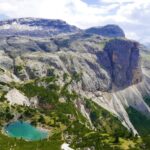
Absolutely – every mountain adventure is likely to be safe with careful planning and effective communication with your partner, friends, family or wider group. Everyone on your day out should be involved in assessing and agreeing the chosen walk over a 1:25000 topographical map. An exposed ledge can be a stroll in the park to one person, yet to another, it can be a scary vertiginous nightmare. Always select a walk with the weather in mind; have a contingency plan just in case the weather catches you out. Pack your rucksack wisely, taking into consideration clothing, extra snacks, water, first aid, exposure to the sun etc. A mobile phone is an invaluable safety item, and reception is generally good in the Dolomites: make sure your phone is fully charged with key numbers entered into your contacts; for extra safety, carry a battery pack. Tell someone back at your accommodation which walk you are doing and, shortly before your holiday, familiarise yourself with mountain safety procedures so that they are fresh in your mind.
At Collett’s we provide walkers with comprehensive route notes, the appropriate map and smartphone navigation via our app. We naturally want you to hit the ground running (well, walking) and get your holiday off to a hassle-free flying start. Our Walks Team is available daily to help walkers select the right walks, BUT these are self-guided walking holidays and ultimately you venture out at your own risk, so all our support must be accompanied with self-preparation and attention-to-detail. Similarly, if you visit the Dolomites independently using local tourist offices for ideas and information, you must prepare each excursion carefully, even if their recommended walks are likely to be well-trodden popular classics at lower or intermediate level.
Another plus for safety is the quality of the waymarking, which is excellent with regular signage providing walking times and/or distances to upcoming mountain huts (rifugios), intersections and villages. You will be reassured by the infrastructure that successfully delivers unforgettable and plain-sailing hiking holidays, from the cable cars and chairlifts to the mountain huts and trail maintenance.

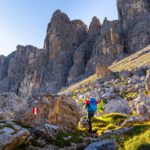
What are the most famous hikes in the Dolomites?

The most famous high treks in the Dolomites are probably the long-distance hut-to-hut Alta Via 1 and Alta Via 2. These hikes traverse the range. The Alta Via 1 unfolds north/south over 120kms (75 miles) from Dobbiaco to Belluno; and in Corvara, our base, Collett’s is close to its highest point at Rifugio Lagazuoi (2752m). The Alta Via 2 is a 13-stage route stretching 174kms (108 miles) from Bressanone to Feltre; it also passes right through our walking domain in the central Dolomites, crossing the colossal Sella (3152m), Corvara’s iconic western backdrop, from the Gardena Pass to the Pordoi Pass.
The most recognisable peaks in the Dolomites are the Tre Cime di Lavaredo (Three Peaks of Lavaredo) on the eastern side of Cortina. In German, they are known as the ‘Three Teeth’ (Drei Zinnern) and inevitably they make a good hunting ground for high level treks. Such is the iconic status of these jagged gems, I feel duty-bound to mention the 6 mile Tre Cime Circuit Trek, which is in condition between June and October. With a total ascent of 400m, I would categorise it as moderate, but it is high altitude, panoramically sensational, pure Dolomites, and unquestionably famous in the hiking community.
Seven of the best challenging hikes in the Dolomites
Our base in the Dolomites is the glorious Alta Badia. With an impressive range of accommodation in Corvara, we believe we are in an unrivalled strategic location for accessing high trails that lead you into some of the most dramatic massifs in the area. Corvara also provides gondola and chairlift access (up to 2500m) on the western side of the Sella massif, a fabulous launchpad for onward ascents to the summit (3152m) and other high level itineraries. From the village you can trek to the summit of its signature peak, Sassongher (2265m), or veer off into the high rocky plateaus and valleys of the Puez-Odle Natural Park. Short bus rides open up the high-altitude drama of the Fanes Natural Park, Lagazuoi and Cinque Torre, a fascinating area of special WWI interest. Mountain passes provide excellent springboards for high level walkers. We have three nearby: Campolongo (1875m), Gardena (2136m) & Falzarego (2015m), each served by local buses.
Year in, year out we are pleased to welcome walkers of all fitness levels to the Dolomites. A good percentage of our guests use us as a gateway to the challenging stuff, and we have numerous unforgettable proposals waiting for them, all supported by comprehensive route notes, map sections, smartphone navigation and a Walks Team that knows the routes. Below is a mouthwatering week of walks that should whet the appetite and hopefully lure you to the most dramatic peaks in the world:
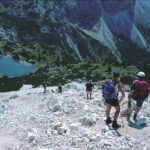
Lago de Lagacio

Distance: 9kms | Walking time: 6 – 7hrs | Ascent & Descent: 770m
A spectacular mountain hike in an everchanging theatre of rocky scenery. The descent from Forcela di Lech and the Hidden Valley are breathtaking features.
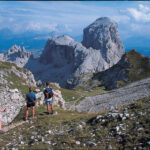
Sas Ciampac

Distance: 12.5kms | Walking time: 5 – 6hrs | Ascent 607m, Descent: 1183m
Discover the dramatic lunar landscapes of the Puez-Odle massif. Ascend to saddles that reveal more breathtaking landscapes before an absorbing descent opposite the astounding flanks of Monte Sella.
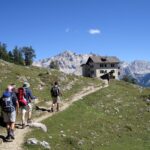
Munt de Gherdenacia

Distance: 11.5kms | Walking time: 5hrs | Ascent: 1028m, Descent: 825m
Ascend to this secluded massif on a trek and scramble that will inspire you with its terrain and features. Feast your eyes on the Sella and Fanes massifs in all their glory. Rifugio Gherdenaccia awaits you on this route, one of our favourite mountain lodges in the range.
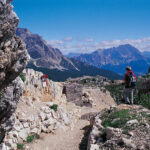
Col di Lana

Distance: 15.5kms | Walking time: 5 – 7hrs | Ascent & Descent : 875m
A sublimely varied route that incorporates fascinating remnants of WW1. This intriguing trek includes some scrambling. With its startling 360° views from the summit, it is another genuine classic.
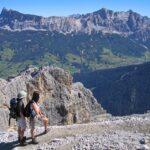
Sella Shelf

Distance: 12.5kms | Walking time: 6 – 8hrs | Ascent: 1202m, Descent: 243m
Wonderfully rough and challenging mountain terrain. Enjoy awe-inspiring panoramas from exhilarating ledges, as monumental rock formations tower above you.
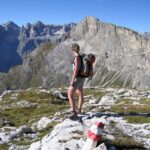
Puez Odle & Sassongher

Distance: 15kms | Walking time: 8hrs | Ascent: 920m, Descent: 1492m
A magnificent and ever-changing day. A steep ascent followed by a traverse across the Puez Odle Massif before an exposed descent from the Forcella dei Sassongher. Wonderful 360° views over Corvara and the Val Badia.

Sassongher

Distance: 11.5kms | Walking time: 5 – 6hrs | Ascent & Descent: 1308m
A magnificently exposed ascent followed by a dramatic short-cabled section towards Corvara’s iconic ‘signature’ peak. As ever, the views steal the show, whether you are gazing down on Corvara or processing the unfathomable massifs. If you time it right, you can share your appreciation with a passing paraglider!
